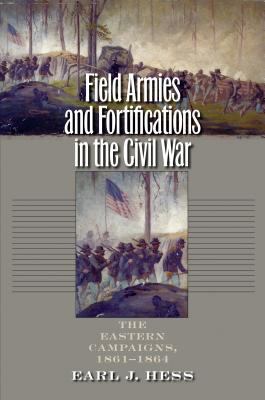
Book
|
Field armies and fortifications in the Civil War : the Eastern campaigns, 1861-1864
Copies
5 Total copies, 5 Copies are in,
0 Copies are out.
Title
Field armies and fortifications in the Civil War : the Eastern campaigns, 1861-1864
Call No
E470.2
Authors
Subjects
United States. Army of the Potomac--History.
Confederate States of America. Army of Northern Virginia--History.
Confederate States of America. Army of Northern Virginia. fast (OCoLC)fst00569915
United States. Army of the Potomac. fast (OCoLC)fst00576981
American Civil War (1861-1865) fast (OCoLC)fst01351658
Fortification, Field--History--19th century.
Fortification--East (U.S.)--History--19th century.
Historic sites--East (U.S.).
Fortification, Field.
Fortification.
Historic sites.
Military campaigns.
Military readiness.
Befestigung.
Sezessionskrieg (1861-1865)
United States--History--Civil War, 1861-1865--Campaigns.
United States--Defenses--History--19th century.
Confederate States of America--Defenses--History.
East (U.S.)--History, Military--19th century.
United States--History--Civil War, 1861-1865--Campaigns
USA--Südstaaten.
United States--Confederate States of America.
United States, East.
United States.
History.
Military history.
Confederate States of America. Army of Northern Virginia--History.
Confederate States of America. Army of Northern Virginia. fast (OCoLC)fst00569915
United States. Army of the Potomac. fast (OCoLC)fst00576981
American Civil War (1861-1865) fast (OCoLC)fst01351658
Fortification, Field--History--19th century.
Fortification--East (U.S.)--History--19th century.
Historic sites--East (U.S.).
Fortification, Field.
Fortification.
Historic sites.
Military campaigns.
Military readiness.
Befestigung.
Sezessionskrieg (1861-1865)
United States--History--Civil War, 1861-1865--Campaigns.
United States--Defenses--History--19th century.
Confederate States of America--Defenses--History.
East (U.S.)--History, Military--19th century.
United States--History--Civil War, 1861-1865--Campaigns
USA--Südstaaten.
United States--Confederate States of America.
United States, East.
United States.
History.
Military history.
Language
English
Published
Chapel Hill : University of North Carolina Press, ©2005.
Publication Desc
xix, 428 p. : ill., maps, photos. ;
ISBN
0807829315 (cloth : alk. paper)
LCCN
2004022010
Dimensions
25 cm.








